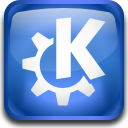CeBIT Open Source Project Lounge -- KDE
KDE -- graphical work environment and applications
ByKDE is among the 15 projects that will present their work at CeBIT, offering the graphical work environment and many applications for Linux users.
Short and sweet: How would you describe your project in one or two sentences?
KDE is a free software project that provides a work environment with many applications relevant to all functional areas as well as a development environment for all the larger platforms. In more than 60 languages, the KDE project provides software today for work and living environments that is easy and intuitive to use.
When did the project begin?
The project was founded in 1996 by Matthias Ettrich.
How many active members does the project have?
Worldwide there about 1,200 active members engaged in programming, building and translating KDE.
How did the project come into being?
On October 14, 1996 KDE's founder Matthias Ettrich entered a comment in the de.comp.os.linus.misc newsgroup about the lack of an easily usable desktop interface for UNIX systems, combined with a call to collaborate on a free software alternative.
Why should a CeBIT visitor come to your booth?
To show that a quality product already exists with an eye to future computing -- powerful, elegant, system-independent and free.
Who do you make your software for?
KDE is targeted equally at enterprises, individual users and developers.
Where do you see your biggest current challenge?
In the transition from KDE 3 to KDE 4, a large part of the KDE framework was totally reworked. The result was that some areas did not inherit the full functionality of KDE 3. The important task for the KDE project is to get this functionality back in.
If you could hire a full-time project developer now, what problem should he or she be ready to solve?
KDE even now runs under Linux, BSD, Mac OS X and Windows. A better integration as well as a porting to further platforms, not least of all for mobile devices, would be an important step to making KDE truly platform-independent.
Under which license is the software currently offered?
The applications are under GPL, whereas the libraries are under LGPL to make it essentially possible to put closed source applications on the KDE platform.
Project website: http://www.kde.org.
Subscribe to our Linux Newsletters
Find Linux and Open Source Jobs
Subscribe to our ADMIN Newsletters
Support Our Work
Linux Magazine content is made possible with support from readers like you. Please consider contributing when you’ve found an article to be beneficial.

News
-
Zorin OS 18 Hits over a Million Downloads
If you doubt Linux isn't gaining popularity, you only have to look at Zorin OS's download numbers.
-
TUXEDO Computers Scraps Snapdragon X1E-Based Laptop
Due to issues with a Snapdragon CPU, TUXEDO Computers has cancelled its plans to release a laptop based on this elite hardware.
-
Debian Unleashes Debian Libre Live
Debian Libre Live keeps your machine free of proprietary software.
-
Valve Announces Pending Release of Steam Machine
Shout it to the heavens: Steam Machine, powered by Linux, is set to arrive in 2026.
-
Happy Birthday, ADMIN Magazine!
ADMIN is celebrating its 15th anniversary with issue #90.
-
Another Linux Malware Discovered
Russian hackers use Hyper-V to hide malware within Linux virtual machines.
-
TUXEDO Computers Announces a New InfinityBook
TUXEDO Computers is at it again with a new InfinityBook that will meet your professional and gaming needs.
-
SUSE Dives into the Agentic AI Pool
SUSE becomes the first open source company to adopt agentic AI with SUSE Enterprise Linux 16.
-
Linux Now Runs Most Windows Games
The latest data shows that nearly 90 percent of Windows games can be played on Linux.
-
Fedora 43 Has Finally Landed
The Fedora Linux developers have announced their latest release, Fedora 43.

